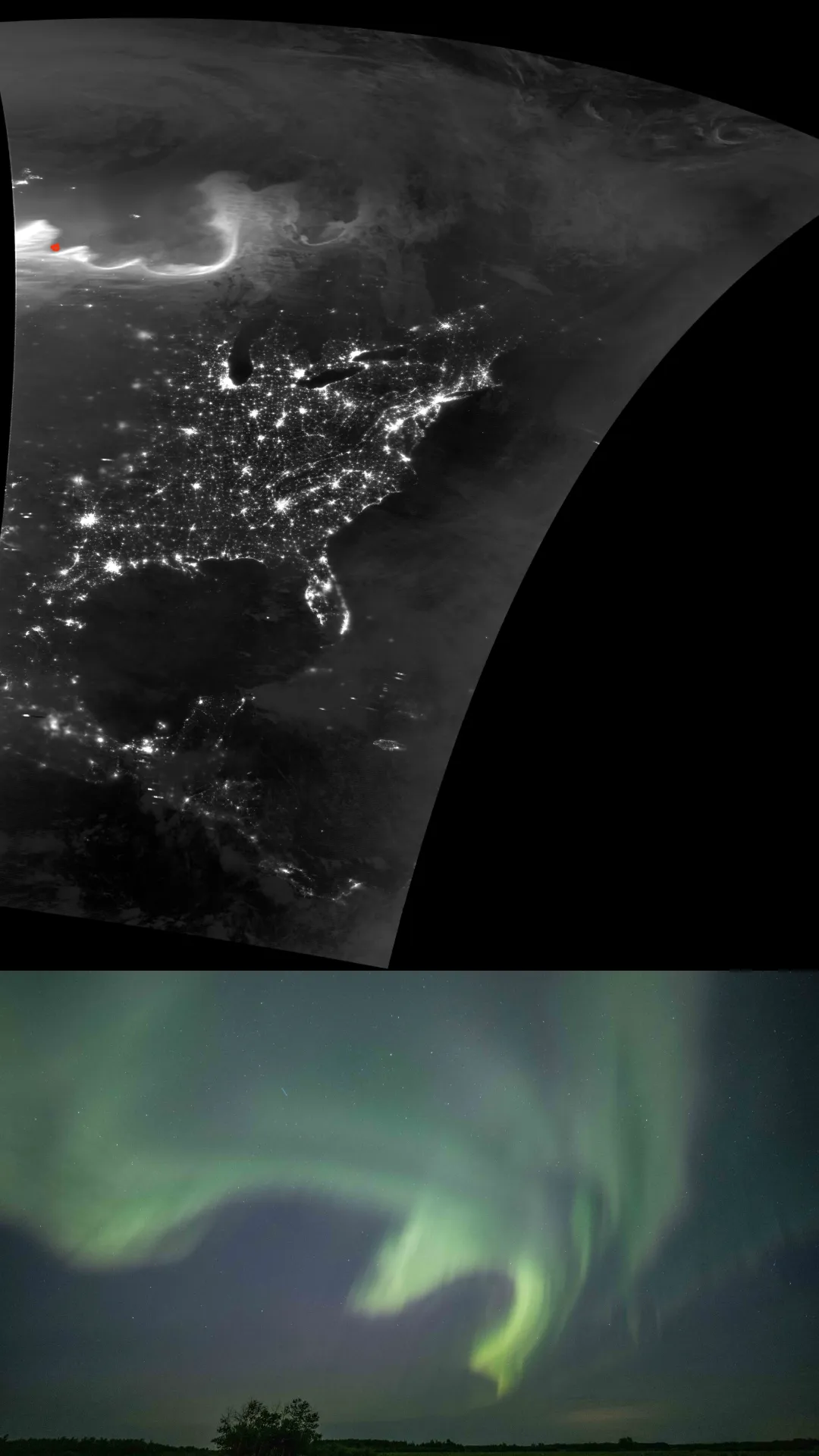Seeing the Northern Lights: From Earth's Surface to Orbit
The aurora, nature's most spectacular light show, has captivated humanity for millennia. These shimmering curtains of light, often known as the Northern Lights (Aurora Borealis) or Southern Lights (Aurora Australis), are a breathtaking display of Earth's interaction with the Sun. But how different does this celestial ballet appear when viewed from our planet's surface versus from the vast expanse of space? Let's take a journey to compare these two incredible perspectives.
The Ground-Level Spectacle: Immersive and Intimate
For those fortunate enough to witness the aurora from the ground, it's an experience that transcends mere observation. Standing beneath a sky ablaze with shifting greens, reds, and purples, one feels truly immersed in the cosmic dance. From Earth, the aurora appears as dynamic, flowing curtains, arcs, or coronas, seemingly close enough to touch. The colors intensify, sway, and pulsate, reflecting off snow-covered landscapes or serene waters, creating a deeply personal and awe-inspiring connection to the natural world.
This ground-level view highlights the atmospheric phenomenon, showcasing how sunlight interacts with various gases in our atmosphere. The vibrant greens are often from oxygen atoms at lower altitudes, while rarer reds come from higher-altitude oxygen. Blues and purples indicate nitrogen. It's a localized, yet expansive, dome of light that makes you feel tiny yet connected to something immense.
The Orbital Panorama: Scale and Science from Space
Now, imagine viewing the aurora not from below, but from above – from the International Space Station or a satellite orbiting Earth. From this vantage point, the aurora transforms from a localized light show into a vast, glowing band that stretches for thousands of kilometers, hugging the Earth's polar regions like a luminous crown.
From space, the full scale of the auroral oval becomes apparent. Instead of individual rays or curtains, you see massive, glowing arcs that paint the planet's limb with ethereal light. This perspective offers a profound insight into the mechanics behind the aurora: the continuous stream of charged particles from the Sun (the solar wind) interacting with Earth's magnetic field. As these particles are funneled towards the magnetic poles, they collide with atmospheric gases, exciting them and causing them to emit light. From orbit, you can truly grasp the global extent of this magnetic interaction and the sheer energy involved.
A Tale of Two Views: Different Angles, Shared Wonder
Comparing these two perspectives reveals the multifaceted beauty of the aurora. The ground view offers an intimate, immersive, and artistic appreciation of the light, its movement, and its immediate impact on the landscape. It's about feeling the cold air, looking up in wonder, and being part of a temporary, ethereal cathedral of light.
The space view, on the other hand, provides a scientific, macroscopic understanding. It showcases the aurora as a planetary phenomenon, a visible manifestation of Earth's protective magnetic shield against the relentless solar wind. From orbit, you see the auroral oval as a dynamic boundary, a living testament to the powerful forces at play in our solar system.
Both views, however, share a common thread: the profound sense of wonder they inspire. Whether you're witnessing the Northern Lights dance directly overhead from a remote polar landscape or observing their majestic sweep across the Earth from hundreds of kilometers above, the aurora remains one of the universe's most captivating natural spectacles, a vivid reminder of the interconnectedness of our Sun, our planet, and the charged particles that create this cosmic masterpiece.





